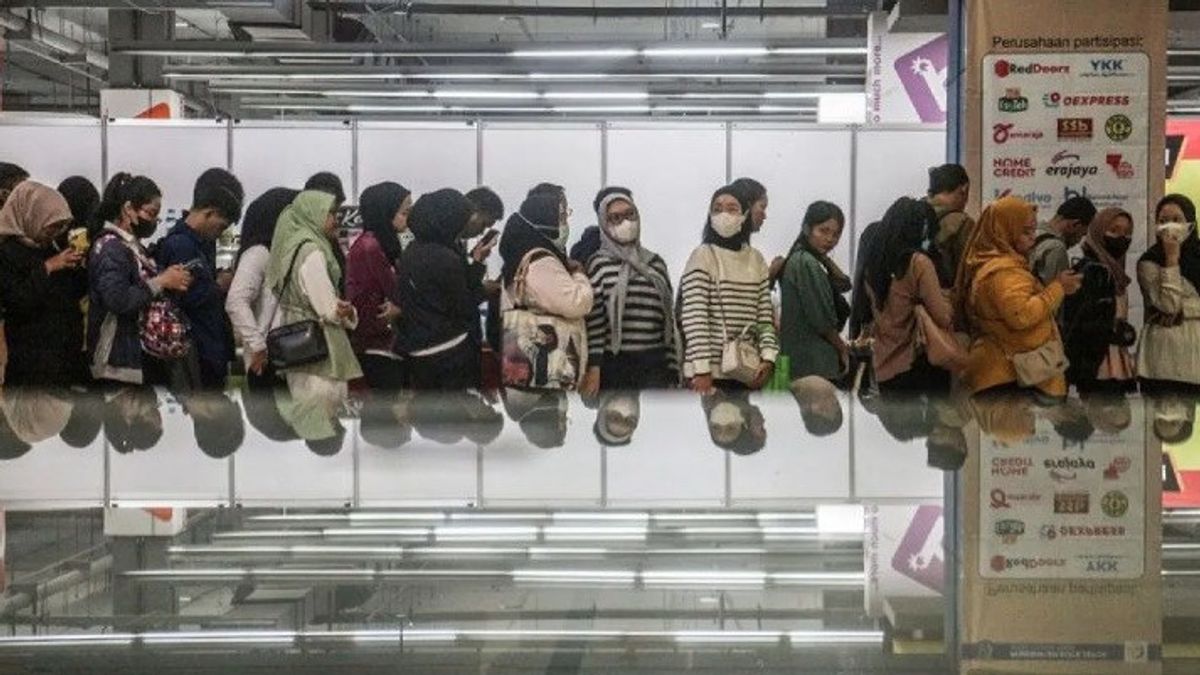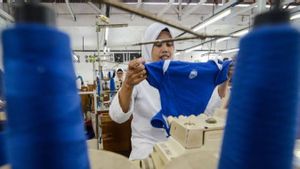JAKARTA - In the midst of the high number of layoffs (PHK) in Indonesia, other facts reveal an irony. Research conducted by Populix and Kitalulus shows that the company is also having difficulty finding potential employees.
In the last few months, the public has been treated to the news about the continuous wave of layoffs. Data from the Ministry of Manpower noted that there had been layoffs for 32,064 workers from Jauari to March 2024.
The government said this happened because of the sluggish economy since the COVID-19 pandemic. Bhima Yudhistira from the Center of Economic and Law Studies (CELIOS) explained that the factors for layoffs, including structural layoffs, ranged from the wrong policy of the Job Creation Law because investments that entered the absorption quality were actually low, so that the safety nets for workers were cut.
But in the midst of a hurricane of layoffs over the past year, there are surprising facts revealed by Populix and Kitalulus research. The research shows that as many as 46 percent of companies have difficulty finding potential employees.
This research is based on a survey of 1,330 job seekers, 530 employers, 100 companies, and an analysis of one million data from the Kitalulus portal job collected in June 2024. Even though data from the Central Statistics Agency (BPS) shows that 7.2 million people are disturbing as of February 2024.
"Analysis of one million job applicant data and labor demand at the Kitalulus portal job shows that the higher the level of education requested, the greater the gap with the availability of labor," said Head of Social Research Populix, Vivi Zabkie.
The research noted that as many as 50 percent of companies rated the technical skills of applicants as still at the beginner level or low, while 35 percent of companies rated soft skills or soft skills of application not good enough. In addition, the level of education needed by the company is also not comparable to the available staff.
According to records, the availability of vacancies for the junior high school education level is only 13 percent, the S1 is 16 percent, and the S2 level is 19 percent. This is still far less than the number of job seekers.
In addition, the ratio of the number of job seekers, job seekers who graduated from social science and natural science is quite large, but the number of job vacancies available is small. This inequality condition makes job seekers who are still unemployed feel more insecure.
There are more job seeker respondents who don't have jobs who feel insecure because they reveal the difficulties more, such as the experience needed is too high (68 percent), the required education rate is too high (59 percent), and they are worried about the number of competitors (53 percent), "said Vivi.
Economic observer from the Center of Law and Economic Studies (CELIOS) Nailul Huda analyzes the phenomenon of the company's difficulty in getting employees in the middle of a layoff storm in the past year.
Huda said there was a match between demand and job offers, making it difficult for companies to find suitable prospective workers.
"Many SMK graduates are unemployed because their skills are not in line with the needs of the industry," Huda said when contacted by VOI.
This discrepancy, said Huda, is not only about the difference between job seeker skills and the needs of employers. When these two things synergize, it is not uncommon for other obstacles that become obstacles, such as consideration of the age and salary of job seekers.
"The age that is too mature requires a higher salary. However, many companies want a young age with a low salary, but with experience," he added.
"Therefore, this match must be reduced by intermediating the business world with education, especially vocational education (SMK and Diploma)," said Huda again.
SEE ALSO:
Vocational education is still a public conversation, after contributing to the largest number of unemployed at the national level. Based on the education level, in 2024 the unemployment rate from SMK graduates was 9.01 percent of the total 7.47 million unemployed people. Meanwhile, the unemployment rate from elementary graduates (2.32 percent), junior high schools (4.11 percent), and high schools (7.05 percent). D4/S1/S2/S3 graduates contributed 5.25 percent of unemployment and D3 graduates under contributed 4.83 percent of unemployment.
Padahal pendidikan vocational dibuat untuk menghadirkan tenaga kerja yang siap kerja. Tingginya angka pengangguman terdidik ini kemudian menimbulkan tanda bertanya besar mengenai efektivitas pendidikan vocational dalam menjawab kebutuhan industri.
The English, Chinese, Japanese, Arabic, and French versions are automatically generated by the AI. So there may still be inaccuracies in translating, please always see Indonesian as our main language. (system supported by DigitalSiber.id)













